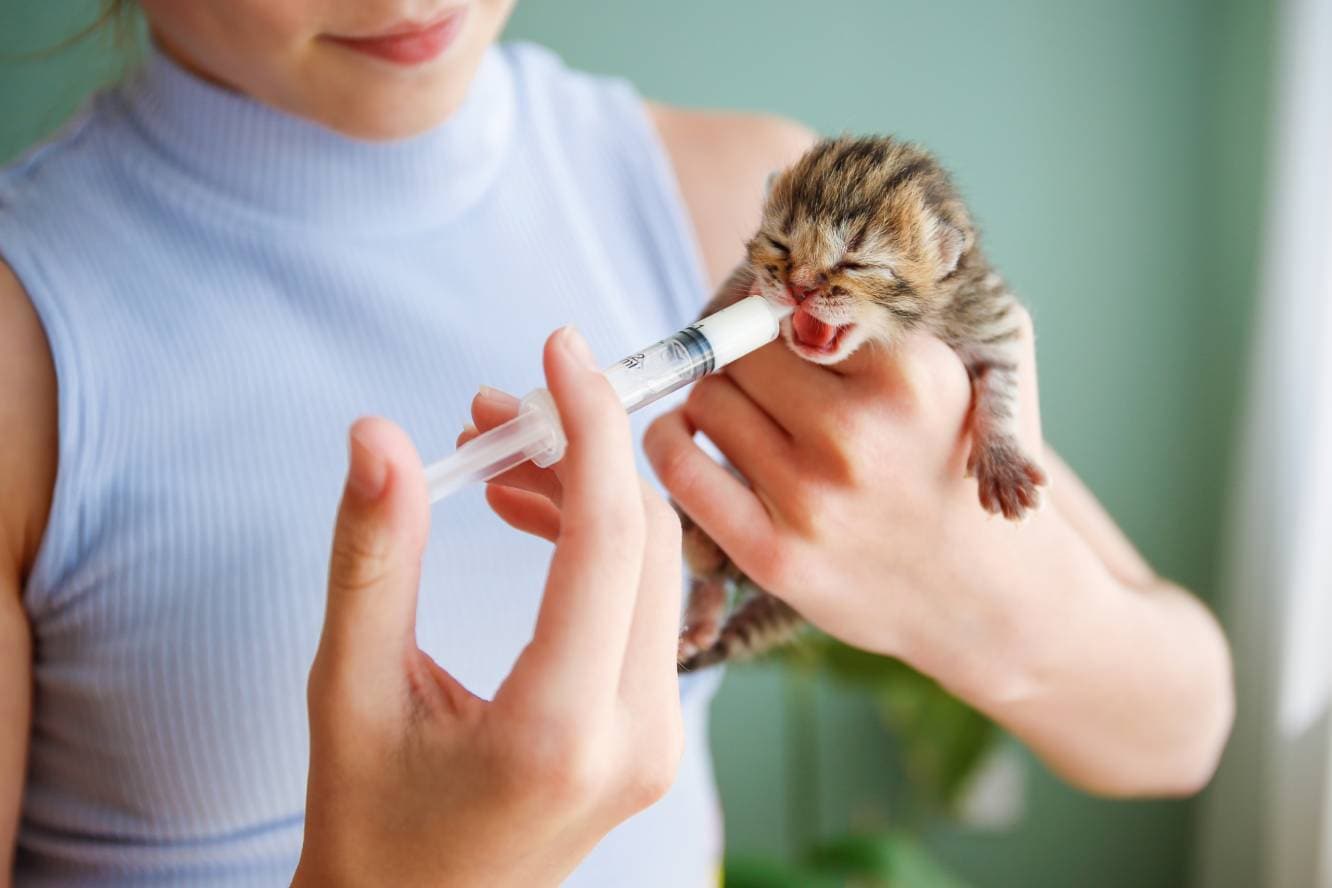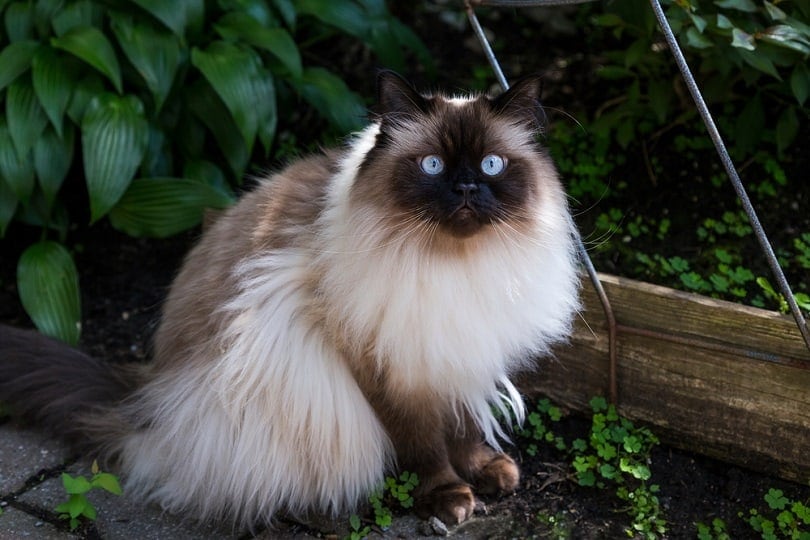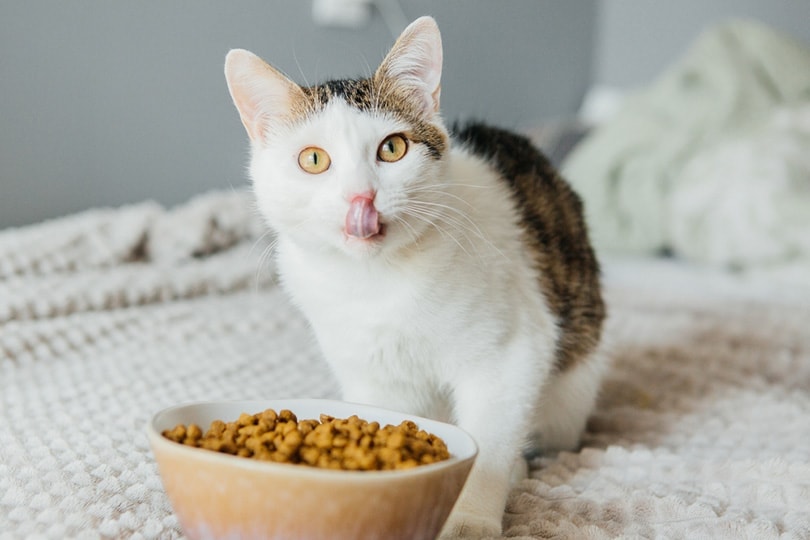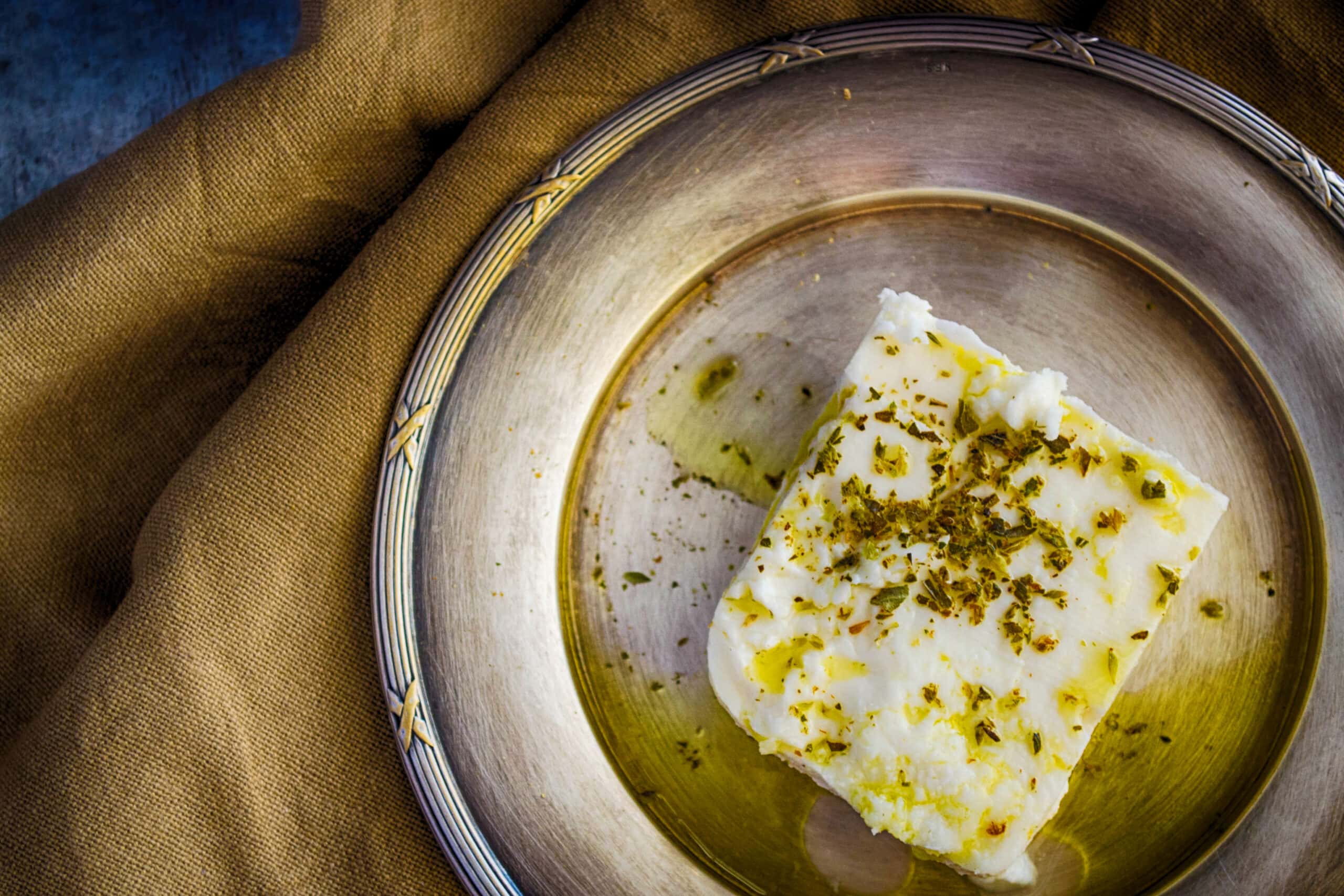How to Syringe Feed a Kitten – 5 Vet Approved Tips
Updated on

If you’ve found an abandoned or orphaned kitten that is still too young to eat canned food or kitten kibble on their own, you may need to step in.
Getting nutrition into that little kitten’s body is a top priority, but so is taking them to the veterinarian for a full examination to ensure that they are healthy and unharmed. Your vet will also be able to guide you through the process of looking after a newborn kitten, as well as what to feed them.
Preparation
Feeding a young kitten isn’t as simple as placing down a bowl of food for them to eat from. A newborn kitten will need to be syringe fed, which requires a bit more effort and items.
- Kitten milk replacement formula
- Warm water
- Syringes
- Teats
- A bottle sterilizer or sterilizing solution (Milton)
- Measuring cup
Young kitten’s immune systems will be more vulnerable. You will need to work hard at keeping their syringes clean, sterilized, and completely free from bacteria, viruses, and fungi.
Before each meal, you will need to wash the syringes and teats with warm, soapy water, making sure to also clean the small grooves and parts. Rinse each part and then sterilize them in a sterilizing solution. You’ll also need to prepare the milk replacement formula because it comes in powder form. Before touching anything, make sure to wash your hands as well as the surface you’ll be preparing your kitten’s milk on.
You’ll need to boil some water to mix in with the powder, but wait for it to cool first. Measure out the correct amount of powder according to the kitten’s weight and add in the correct amount of warm water (the measurements will be in the instructions). Test the formula’s temperature by pouring a drop on your wrist. It will be safe for your kitten to drink if it is comfortably warm.

What You Need to Know About Syringe Feeding a Kitten
- You cannot use cow’s milk to feed a kitten, as it is not suitable. A mother cat’s milk (even from a foster mom cat) is the best thing to give a newborn kitten, but if that is not possible, milk replacement formula that is designed for kittens is the next best thing.
- If you have no milk replacement formula, the kitten is starving, and the vet stores are closed, you can temporarily feed them a mixture consisting of one cup of whole milk, one egg yolk, one drop of liquid multivitamin, and three Tums. You will need to blend these ingredients together, and syringe feed it to the kitten. However, this mix is for emergency use only and you must start the kitten on the correct formula as soon as you can access a vet store. Consider a visit to a 24-hour veterinary clinic as they will often have milk replacer.
- A kitten will need to be syringe fed if they are struggling to suck from a bottle, but once they are strong enough, move them onto a bottle because it gives them control over how much milk they’re sucking out at a time.
- You will need to either syringe feed or bottle feed the kitten until they are weaned at 3-4 weeks of age.
- The number of feedings per day and volume of milk per feeding is calculated based on their weight.
The 5 Steps to Syringe Feed a Kitten
1. Use a Syringe with a Teat
Although the kitten isn’t able to suck yet, adding a teat to the end of the syringe is a lot softer than the hard plastic end of a syringe. It will also get the kitten used to having a teat in their mouth, which will help them practice sucking motions and help them transition onto a bottle more easily when the time is right.

2. Get the Syringe Ready
We’ve discussed mixing the milk with water and sterilizing the syringe in the preparation stage, so now it’s time to add the formula to the syringe. Depending on how old your kitten is and how much formula they need will help you pick the correct syringe size. You can opt to use the same syringe size as your kitten gets older, but you may need to keep refilling it as they will require more formula.
Get ready to feed your kitten by placing the tip of the syringe into the milk and pulling the plunger. Keep sucking up the milk with the syringe until the milk reaches the number of ounces your kitten needs to consume.
3. Get Your Kitten into Position
Before feeding your kitten from the syringe, get them into a natural feeding position, which is the same position they’d be in if they were sucking from their mother. This position is on their belly with their head up. Although human babies are fed on their backs, kittens should never be fed in this position as it can cause choking.

4. Squeeze Milk onto Their Tongue
Syringe feeding your kitten should happen slowly, and you’ll need to be patient with your kitten as they figure out this new way of eating. Squirting too much milk into their mouth can lead to aspiration pneumonia as they inhale the milk instead of swallowing it. Start by placing the syringe in the kitten’s mouth and squeeze out a drop onto their tongue so they can taste and swallow the milk.
At first, you may need to gently massage their throat, which will cause them to swallow, and as they realize this, they should start to swallow on their own. Once your kitten gets the hang of it, you can squeeze small amounts of milk into their cheek to swallow.
Continue to repeat this process until they have finished the amount of milk the veterinarian recommended. Although syringe feeding is time-consuming, never force the milk down your kitten’s throat as it could cause them to choke.
5. Clean All the Parts
You should have cleaned the syringe and teat before using them for the first time, but it is also important to clean them after every use to kill any bacteria from growing. Remove the teat and plunger from the syringe and place all the parts into warm, soapy water. Once you’ve cleaned and rinsed each part, place it in the sterilizer. Now, everything will be ready for you when the next feed comes around.

When to Wean Your Kitten
As your kitten develops, they should become strong enough to drink the formula from a bottle. Bottle feeding is less time-consuming than syringe feeding because the kitten will be able to control the amount of milk they want to suck up at a time. This will eliminate the process of squeezing out a few drops onto your kitten’s tongue or cheek and then waiting for them to swallow it before doing it again.
You will need to syringe feed your kitten every 2 hours at first. The feeds will then stretch out to every 3 hours by the time they’re 2 weeks old. By 3 weeks, they’ll need to be fed every 4 hours, and by one month, they’ll only need to be fed every 5 hours.
Once the kitten starts to chew on the teat at around 3-4 weeks old, you can start weaning them. Start the weaning process by mixing pureed wet kitten food with their milk replacement formula. Place the mixture in a shallow flat tray. You can get this mixture on your finger and smear it around and in their mouth and paws to get them licking at it. Direct their attention to the bowl with the food while continuing to entice them. After a week or so, you can stop using formula and start softening the kitten food with water. Remember not to change the type of food you are offering throughout the weaning process as this can lead to diarrhea.
Conclusion
Although a big commitment, syringe feeding an abandoned or orphaned kitten might be the only way to get food into their little body. You will need to clean and sterilize all the items before using them to kill any bacteria, viruses, or fungi that might be on them.
Mix the milk replacement formula with boiled water and allow it to cool before adding it to the syringe to feed your kitten. Get your kitten into the natural feeding position and squeeze a few drops onto their tongue, allowing them time to swallow before squeezing out more. Once they’ve finished their milk, clean the parts you used with warm, soapy water and sterilize them once more.
Featured Image Credit: Victoria 1, Shutterstock













